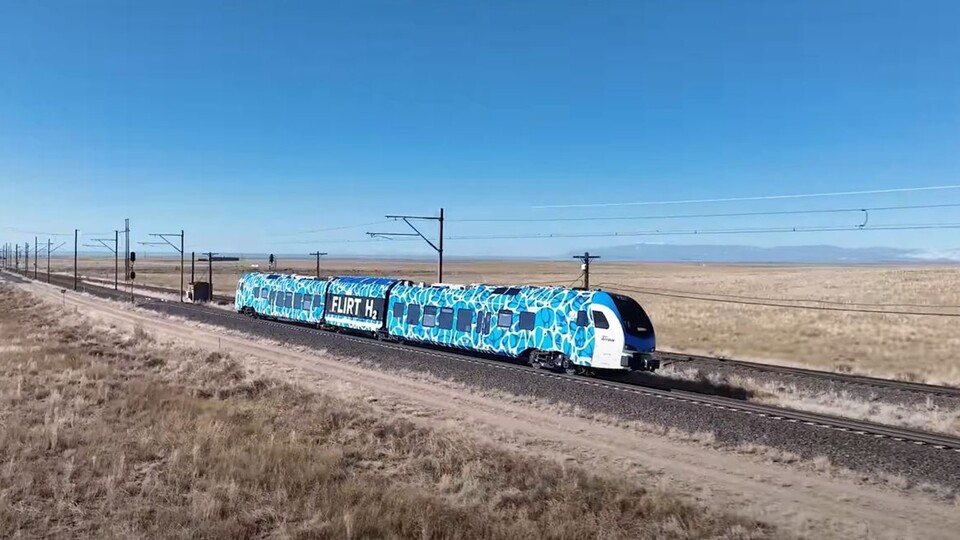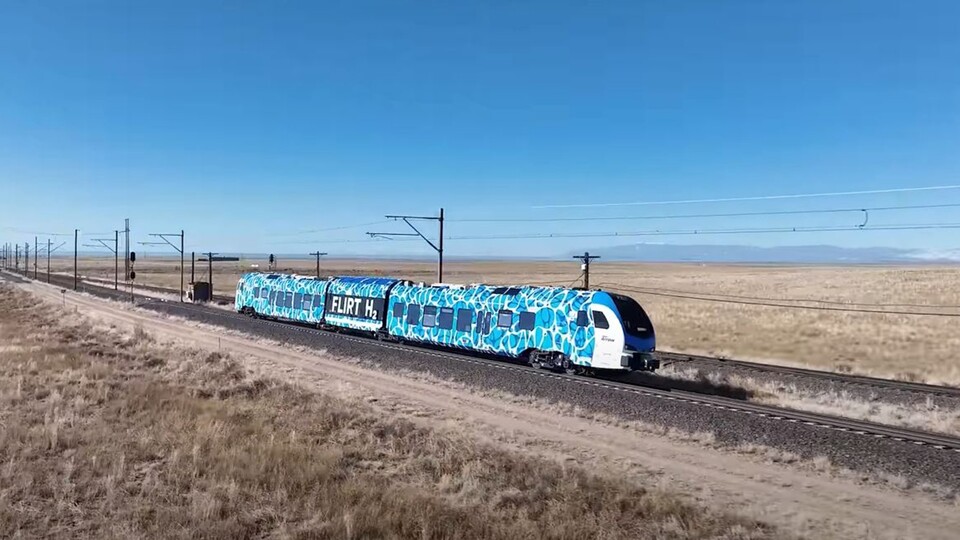
Here the train is currently on its world record tour through the Colorado desert at the Ensco test center. (Image source: YouTube video / Stadler Rail)
Advertisement
A passenger train from a Swiss company set a new Guinness World Record on March 22, 2024. Flirting H2
covered a distance of 2,803 kilometers in the USA – without refueling.
The special? The train does not run on diesel, but supplies its fuel cell drive with hydrogen and leaves the competition behind in terms of route technology.
Record proves the potential of H2 trains
Engineers are also trying to replace conventional and fossil fuels in rail transport – without losing the efficiency of the fuel. The engineers at Stadler Rail took on this mammoth task and covered an immense distance in 46 hours:
Advertisement
Link to YouTube content
Why is this so special?: The Stadler company already hired one in 2021 record on – but at that time not with H2 but with a purely battery-operated train. 224 kilometers The train ran between Berlin and Warnemünde in winter. A train whose operating range according to the magazine News Atlas should actually be 80 kilometers per battery charge.
So now hydrogen? The range of the record-breaking H2 train is far greater than that of a purely battery-powered train. But that's not all: If this range of 2,800 kilometers is maintained in conventional operations or freight transport, it will far exceed all existing models.
State of development: 2018 took the first hydrogen train from the company Alstom Coradia iLint
starts its passenger service in Berlin. In addition to this train, Siemens and the DB are currently developing a train called Mireo Plus H as part of the H2goesRail project.
According to Siemens, the Mireo Plus H can travel up to 1000 kilometers and has a top speed of 160 km/h. If everything goes according to plan, the Mireo will be used on the Tübingen, Horb and Pforzheim route this year.
Further examples of H2 passenger trains:
- China's CRRC: 600 kilometer range, top speed: 160 km/h
- Alstom's Coradia iLint: 1000 kilometers, 140 km/h loud Hydrogeninsight
- Spain's hydro-hybrid train Talgo: 800 kilometers, up 220 km/h in hybrid operation
- Planned: Indian H2 train with a range of 600 kilometers, 160 km/h
Hydrogen instead of diesel – does that make sense?
Not all routes can be electrified. Passenger and freight trains often have to travel long distances without overhead lines. This is currently not possible everywhere with a single battery charge. That's why diesel locomotives are still used.
For comparison: Conventional diesel locomotives of the 218 series can hold 3,000 liters of fuel and, according to Wikipedia, can travel around 1,000 kilometers.
Hydrogen trains with a longer range could definitely step into the breach here as a green gap filler. As listed above, H2 trains now also have a range of 1000 kilometers and can also be used refuel similarly quickly.
In order for this project to be truly green, green production of hydrogen from renewable energy sources is mandatory.
For example, should Deutsche Bahn use gray hydrogen (obtained from fossil fuels) or red hydrogen (electrolysis from nuclear power) due to a lack of hydrogen and use this for example France If she has to buy something to meet her needs, she can also continue driving directly with her diesel locomotives.
